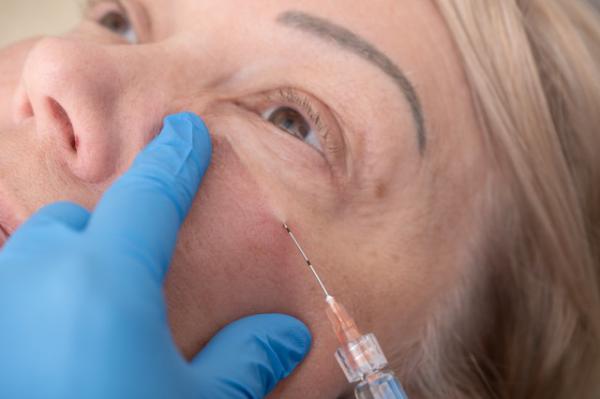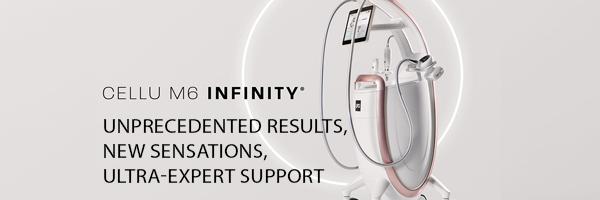
The Missing Link in Injectable Innovation
Over the past decade, injectable aesthetics has undergone remarkable transformation. Innovations in hyaluronic acid (HA) fillers, biostimulatory agents, and combination treatment protocols have redefined facial rejuvenation, allowing for more natural and tailored outcomes. Yet despite this progress, one critical tool has lagged behind in both innovation and clinical focus: the microcannula.
Originally introduced to minimise vascular injury and tissue trauma, blunt-tip cannulas are now a staple in aesthetic medicine – particularly in sensitive zones like the tear troughs, nasolabial folds, and lips. But while fillers have advanced significantly, cannula design has remained largely static, failing to meet the evolving demands of modern injectable practice.
Injectables have evolved - Cannulas have not
In recent years, the aesthetics landscape has embraced cutting-edge filler technologies such as RHA and Vycross for enhanced integration and longevity. Biostimulants like Sculptra (PLLA) and Radiesse (CaHA) have introduced collagen induction as a core therapeutic goal. Alongside these innovations, techniques have become more refined – microdroplet placement, dual-plane injections, and polynucleotide-based treatments are now widely adopted.
Polynucleotides, a novel regenerative injectable, are gaining popularity for delicate areas such as the under-eye region. These treatments require extremely superficial, controlled delivery to be both effective and safe. Unfortunately, many older cannulas were never designed for this type of precision. Their rigidity, tip configuration, and port placement often hinder accurate placement in superficial tissue planes.
With the increasing emphasis on multilayering and advanced microinjection, today’s aesthetic techniques demand more from delivery devices. Yet most cannulas still reflect design principles from over a decade ago. Market feedback from experienced clinicians confirms this – finding a consistently high-performing cannula remains a widespread frustration. The gap between injector expectations and available hardware continues to grow.
Clinical studies prove cannulas are safer
Randomised trials and retrospective data consistently support the safety and efficacy of cannulas. A 2021 split-face trial by Jones et al. demonstrated comparable aesthetic outcomes between cannulas and needles for cheek augmentation, with significantly fewer adverse effects on the cannula-treated side. Beer et al. (2023) echoed these results in nasolabial fold treatments, highlighting reduced bruising, nodules, and discomfort.
More strikingly, a large-scale analysis by Alam et al. (2021) across 1.7 million syringe injections found that vascular occlusion occurred in one out of every 6,410 needle treatments, compared to just one in 40,882 with cannulas. The data is clear: cannulas greatly reduce the risk of serious complications.
Yet none of these well-regarded studies specify which cannula brands were used. This is a critical omission, considering the known variability in design, flexibility, and handling between manufacturers. While filler studies routinely cite product names and rheological properties, cannula studies often generalise their instrumentation, making it difficult to translate safety data into actionable practice.
Why the cannula itself matters more than ever
In aesthetic medicine, the quality of the delivery tool is just as crucial as the product being injected. While much attention is given to the composition and properties of fillers, research shows that poor technique and inappropriate delivery devices are responsible for many suboptimal outcomes. According to De Boulle et al. (2015), the majority of complications in filler procedures can be traced back not to the product itself, but to how and where it is placed. This highlights an often-overlooked truth: precise, controlled delivery is fundamental to both safety and natural aesthetic results.
Injector control, patient comfort, and safety outcomes all hinge on the design of the cannula. Characteristics such as shaft rigidity, port location, wall thickness, and tip geometry influence everything from product flow to tissue response. A poorly designed cannula may require excessive force, which can then be inadvertently entered into a vessel, especially in high-risk zones.
Filler properties also interact with cannula performance. High-viscosity products demand larger internal diameters and smoother bores to prevent clogging and ensure even distribution. Yet most studies and training programs overlook these mechanical relationships, leaving injectors to navigate a trial-and-error process in selecting appropriate tools.
A 2023 paper titled “Comparison of the Microstructures and Properties of Different Microcannulas for Hyaluronic Acid Injection” used scanning electron microscopy to demonstrate significant structural differences among cannulas. Findings included inconsistent port shapes, varying metal compositions, and irregular surface finishes, all of which could plausibly affect clinical performance.
A regulatory and research blind spot
Unlike dermal fillers, which undergo rigorous classification and clinical testing, microcannulas are often classified as low-risk medical devices with minimal regulatory oversight. This results in limited pre-market evaluation and virtually no post-market comparative data.
The scientific literature reflects this oversight. Out of more than 100 recent publications on injectable procedures, only a few mentioned a cannula brand or design specifications. Without these details, clinicians cannot make informed choices or link outcomes to device performance. This lack of data not only stifles product development but also limits practitioner confidence. It also shows that there is a worldwide lack of insight into how delivery devices can impact clinical outcomes.
Training still trails behind
Even with growing evidence supporting cannula use, many aesthetic practitioners – particularly in the UK – remain hesitant. A key barrier is training. Foundational aesthetic programs often fail to teach cannula techniques, resulting in a skills gap that leaves new injectors reliant on needles, even in high-risk areas.

A 2022 review by the Joint Council for Cosmetic Practitioners (JCCP) and Health Education England (HEE) emphasised the need for more comprehensive training standards in non-surgical aesthetics, including device-specific competencies. But with no uniform curriculum, many clinicians are forced to seek informal mentorship or trial-based learning, which can lead to inconsistent results and compromised safety.
Why I designed Precision32
As the innovator behind Precision32, I developed this next-generation microcannula to address the shortcomings I witnessed firsthand in both practice and feedback from peers. The demands of today’s injectable – especially for superficial and multi-layer techniques– simply outpace the capabilities of older cannulas.
Precision32 was the result of close collaboration with experienced clinicians and key opinion leaders. Its design is purposeful: a finely tapered blunt tip for smooth tissue entry, a near-tip lateral port for controlled superficial delivery, and a carefully calibrated shaft that balances rigidity and flexibility for precision in anatomically sensitive zones like the tear trough.
Clinicians across the UK have praised its performance, citing smoother gliding, improved control, and greater confidence, especially in complex or delicate procedures. For many, switching to Precision32 was not only a technical upgrade but also a confidence boost in their ability to work safely and effectively.
Conclusion: The Cannula deserves a closer look
The microcannula has become essential in modern aesthetic medicine, yet it remains one of the least studied and least innovated tools in the practitioner’s kit. As injectables evolve to support clinical outcomes and intricate techniques, the devices used to deliver them must keep pace.
Without design evolution, the cannula risks becoming the weak link in otherwise sophisticated treatment plans. Precision32 offers one step forward.
It’s no longer just about what we inject. It’s about how we deliver it. And that begins with a closer look at the cannula.
